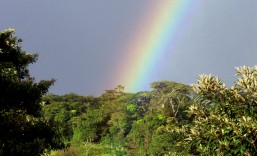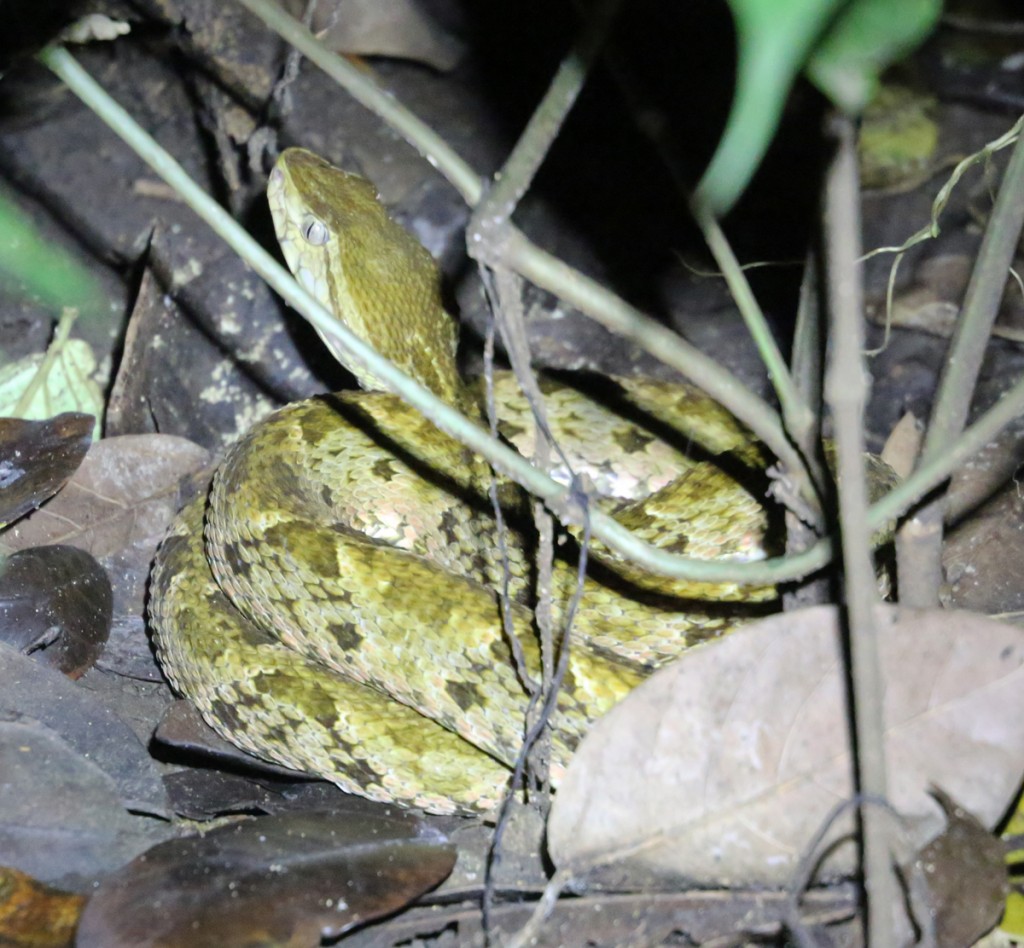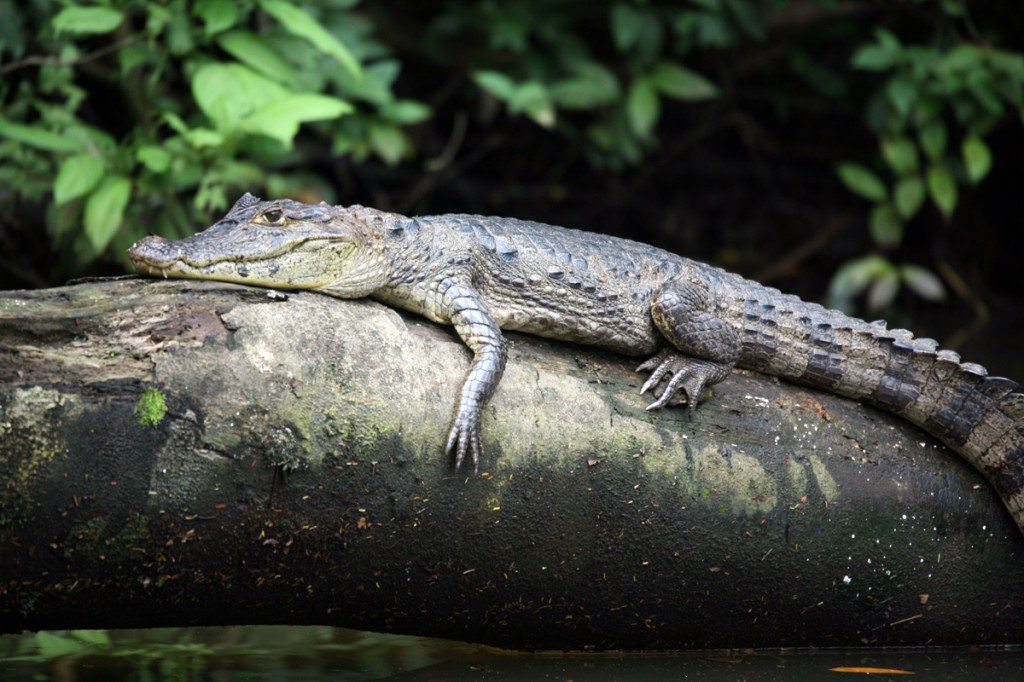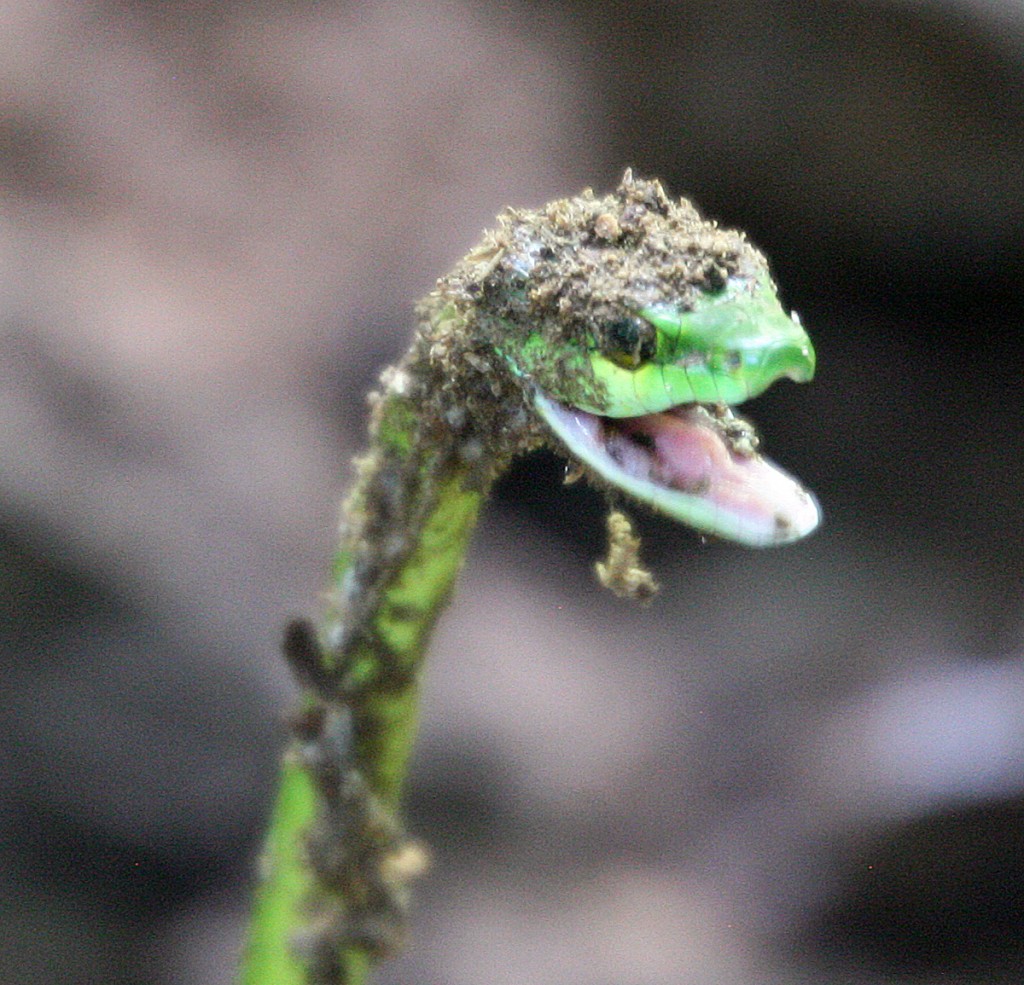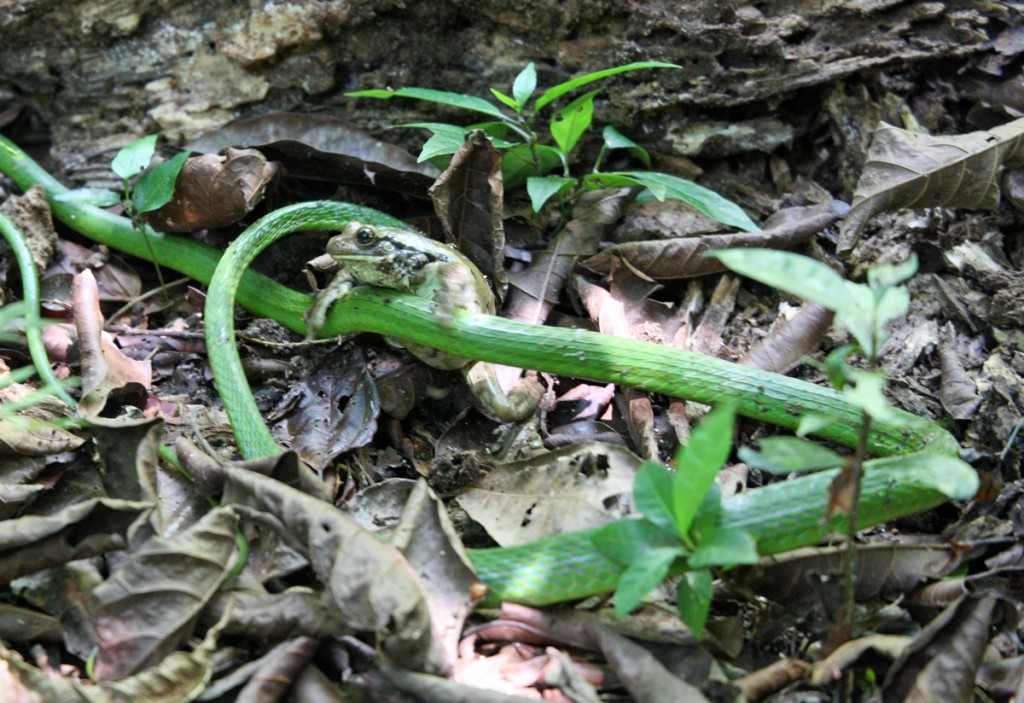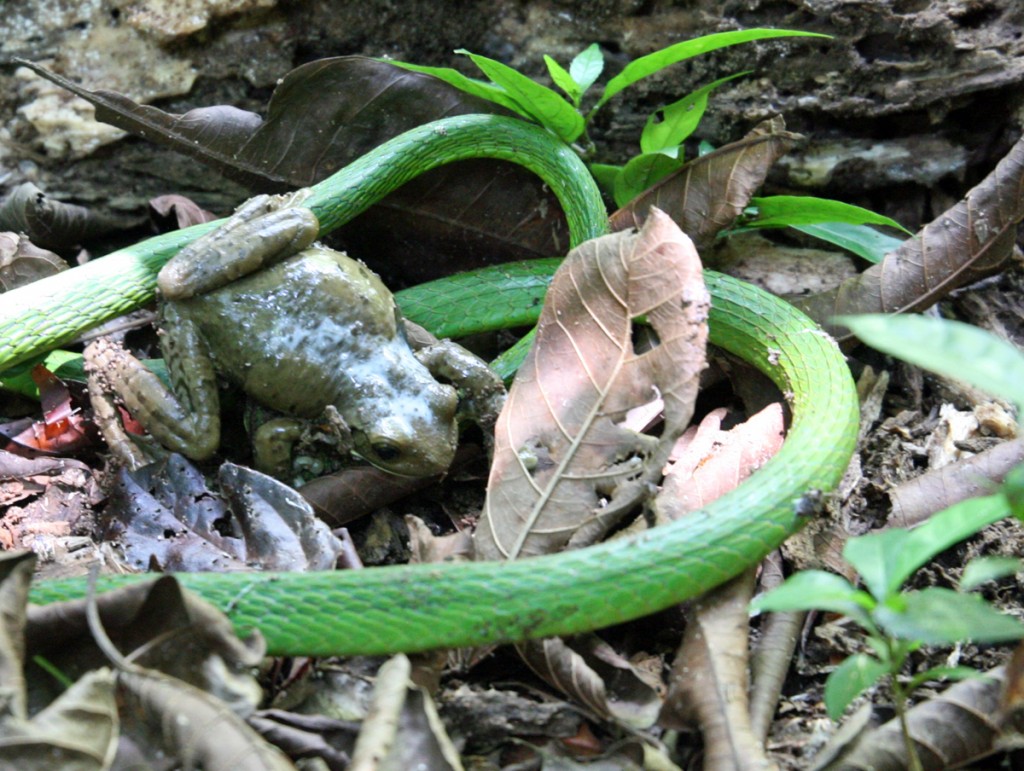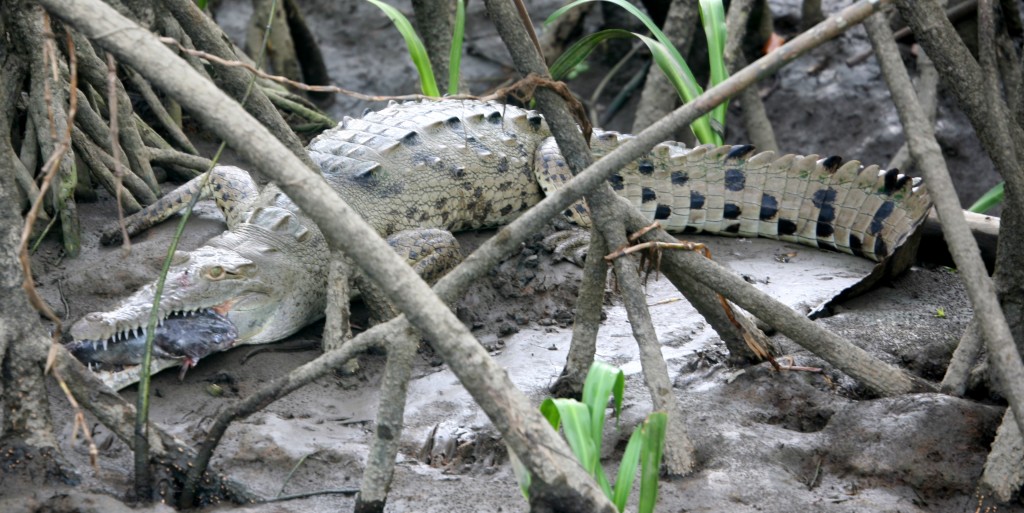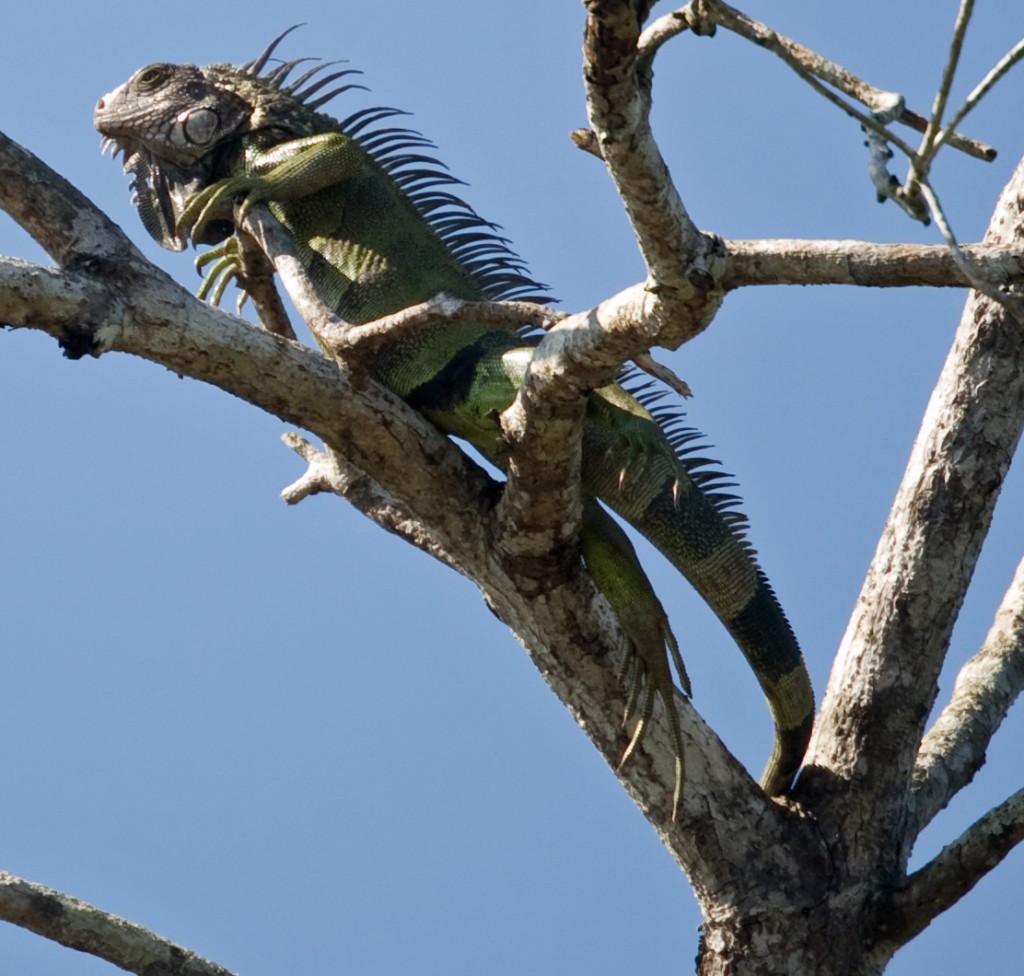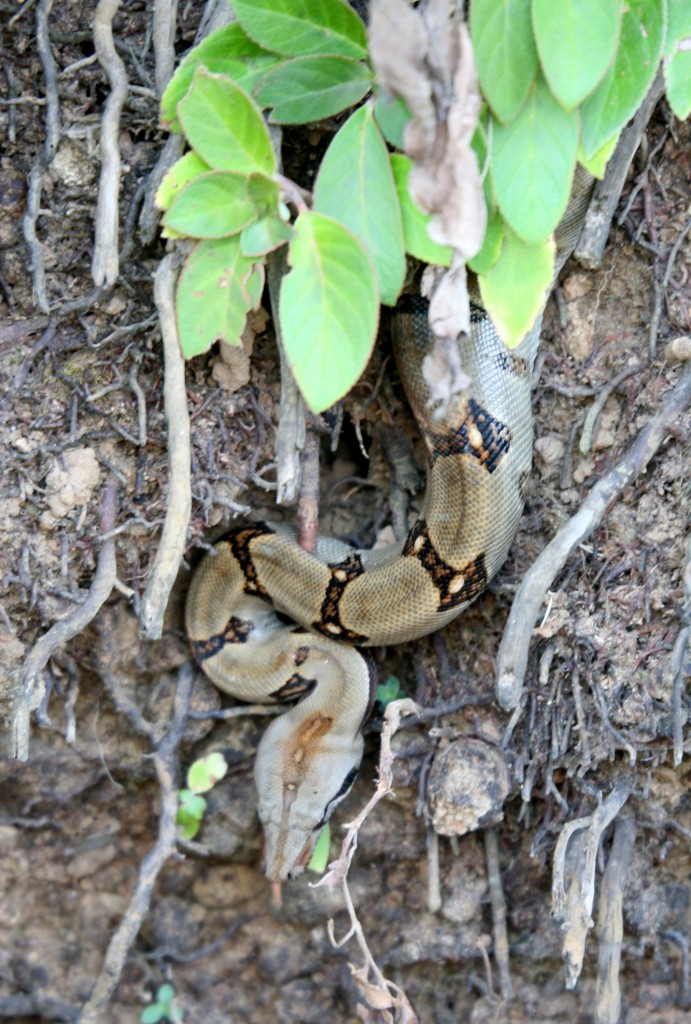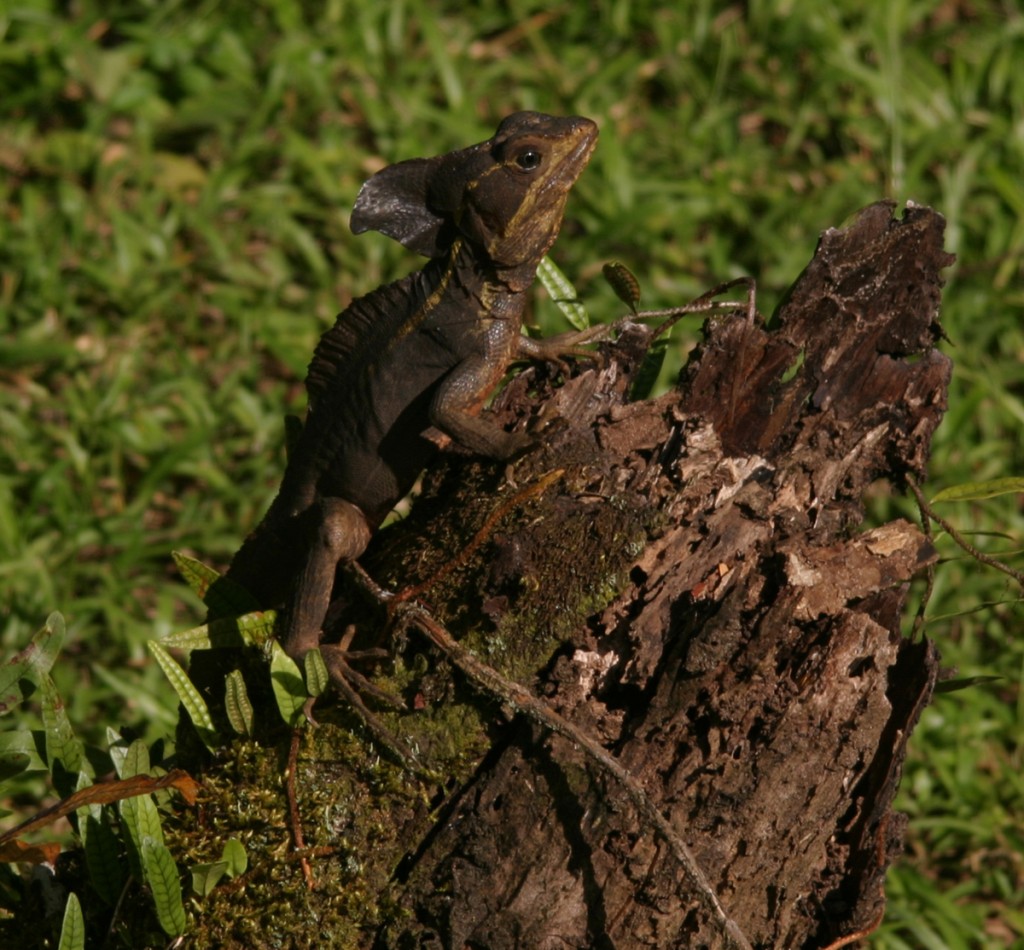
A basilisk poses on a stump near Tortuguero.
Every time a guide has pointed out one of these reptiles, it has been described as a “Jesus Christ Lizard” for its ability to run on the surface of water using only its hind legs. I just learned from my new reference book on amphibians and reptiles in Costa Rica, however, that there is actually more than one basilisk species capable of “bipedal locomotion across water.” The particular species in this photo, Basiliscus vittatus, while it can run on water, tends to be more terrestrial, and is commonly spied near the ground and further away from water than other basilisk types that frequent trees.
All media is copyright costaricawildlife.net, 2013.
